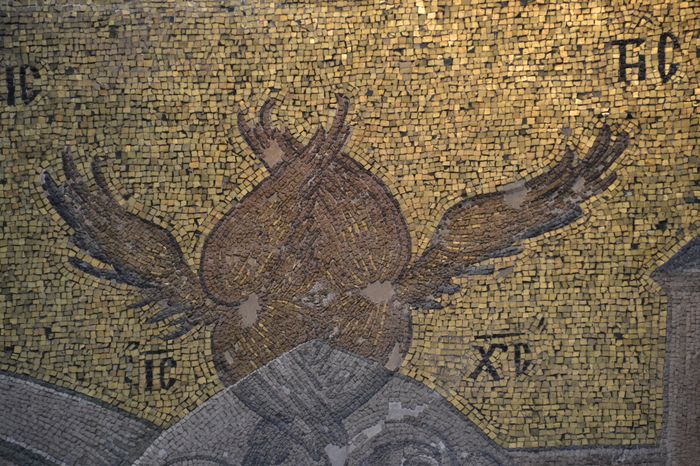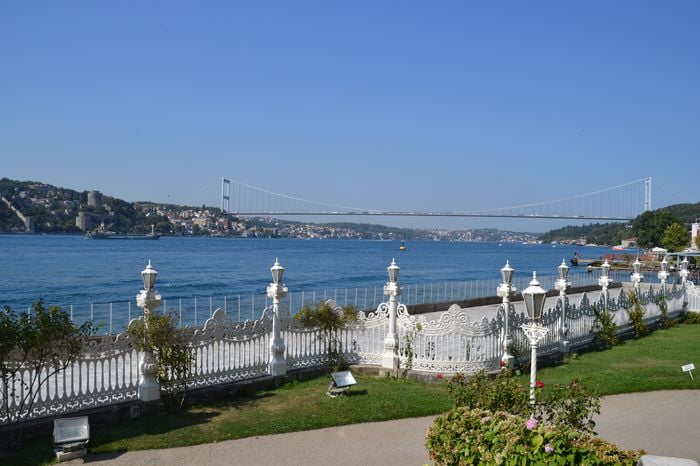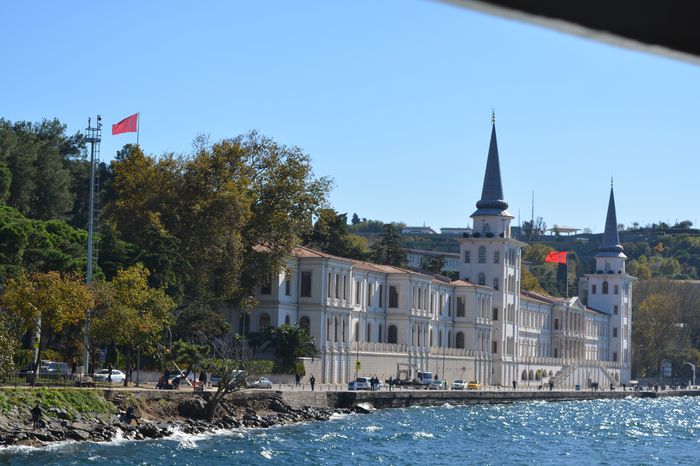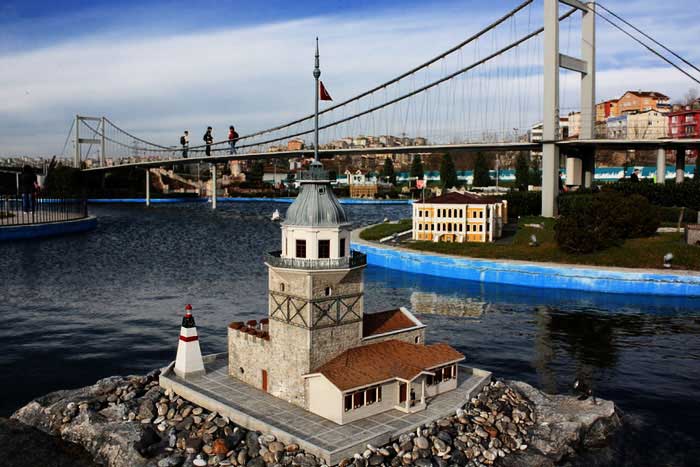It showed no impiety to outdo one’s ancestors in this manner, especially while outdoing one’s contemporaries to advance the family name.
From among them Juliana, shining light of God-blessed parents, fourth in the line of that royal blood, did not belie the hopes of the queen who left such splendid children. She raised up a small temple to the great and glorious one here, augmenting the glory of her many- sceptered forebears, bearing the orthodox faith of a zealous lover of Christ. Who hasn’t heard of Juliana, how she made her parents glorious by her well-made works, pious as she was?
By the time this church was built, of course, no one could fail to know the name. And not only in Constantinople:
You alone built countless churches in every land, ever fearing the servants of the God of the sky.
Human figures
The apse arching over the altar was decorated with human figures on a gold background, and there were mosaics and sculpture everywhere, including busts of Christ, the Virgin, and the apostles. Later in the sixth century, the bishop of Tours in Gaul, Gregory, wrote in one of his histories how Justinian envied Juliana’s riches and her gold, so she promised him that he could take what he liked—but then she had it melted down to decorate her church before he could take possession and he was too embarrassed to complain. She gave him a small ring as consolation. Although Justinian eventually built bigger churches, the sting of the snub lingered. Building well was Juliana’s best revenge for her husband’s downfall bulgaria private tours.
For ten years, Polyeuctos’s church was the biggest and best ever seen, and Juliana died in 528 before she saw her church outstripped in grandeur. When she died, her eunuchs left Constantinople to become monks at the monastery of Saint Sabas in Jerusalem, a notorious hotbed of her Chalcedonian religious views.
Juliana herself is memorialized and pictured in one of the most dazzling surviving late antique manuscript books, the Materia Medica of Dioscorides, in a copy now in Vienna, written for and dedicated to Juliana as patron. This lavish book is a copy of the handbook of drugs and rem¬edies that Dioscorides—an intrepid traveler in the Greek world—origi¬nally wrote around 65 CE. Nearly 400 color illustrations show us plants in loving detail, each one facing a page of text describing its medical powers,
with the original material from Dioscorides supplemented, rearranged, and revised. An illustrated handbook of Mediterranean birds is also in¬cluded. Materia Medica was still in Constantinople when the city fell to the Turks in 1453 and eventually came into the possession of Suleiman the Magnificent’s Jewish physician. Emperor Maximilian II purchased it at a vast price and brought it to his library in Vienna, where the book remains to this day, having resided for 1,500 years in only the two imperial cities.
Olybrius of plotting against
Four years after Juliana died, Justinian accused her son Olybrius of plotting against him and sent him into exile, confiscating his wealth. Although he was eventually restored to favor, Olybrius vanishes from history. A son or nephew, another Areobindus, married Justinian’s niece Praeiecta and went out to fight the Moors in Africa in the 540s, a decade after Justinian thought he had successfully recaptured that province. This Areobindus played a double game in Africa, recruiting and then betraying different Moorish leaders. Seeking refuge in the bishop’s monastery in Carthage, he was received with all state and assured of his safety, then murdered in his bed there the same night. That is the last trace of the family except for the church Juliana built Olybrius’s brief reign.
The city was full of churches, and getting fuller. In the mid-fifth century, near the head of the Golden Horn and thus outside the original Constantinian city, a church dedicated to the Virgin had been built at Blachernae. During the reign of Emperor Leo I (457-474), it was privileged to become the place of repose for an astonishing relic, the robe of the Virgin herself, and so by about 500 the court had built there a subsidiary palace for emperors and their families. Such a gesture is religious in many ways, not least for the statement it made about the Virgin’s lofty dignity in a period when, as we have seen, some people thought her a mere woman and unworthy of the title “God’s mother.”
On the way out to this palace, the church of the Apostles that Justinian built in 550 became the resting place for emperors and a regular site of suitably deferential worship of them: Theodora and then Justinian would both come to lie there—Justinian’s funeral being the occasion of a vast congregation along the main street and the subject of part of an epic poem in honor of Justin II.







